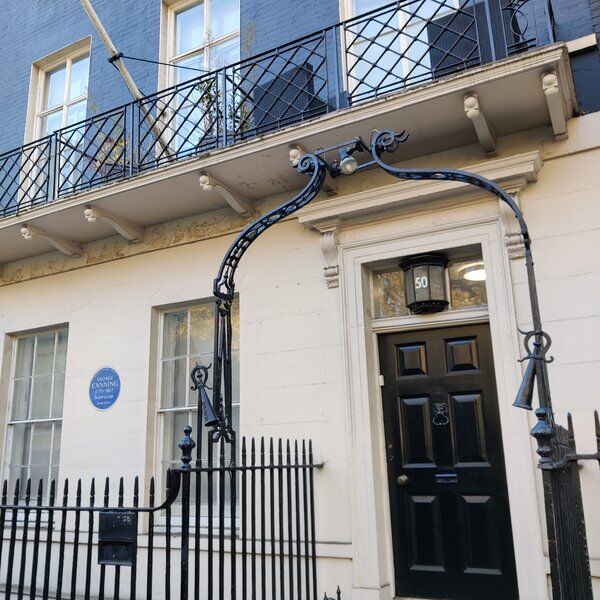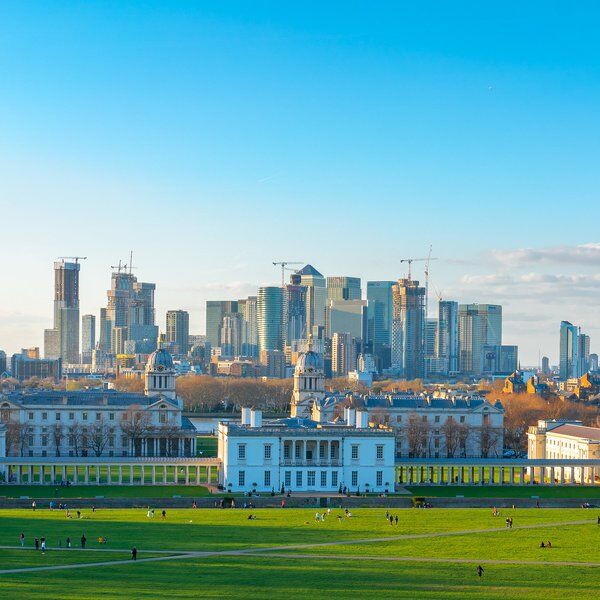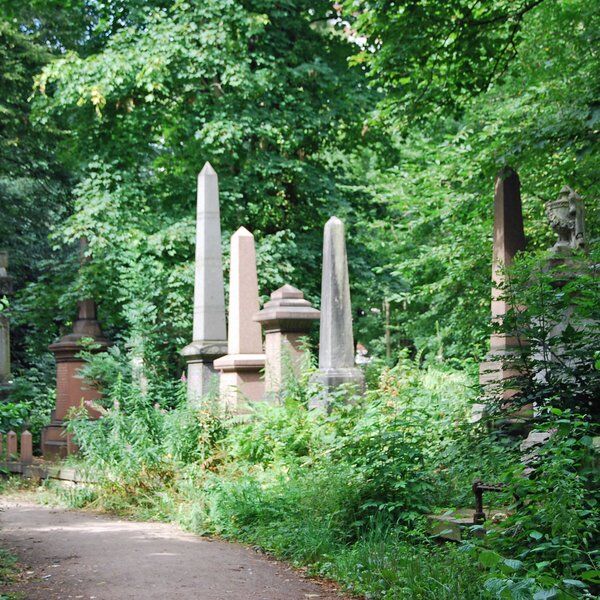Wherever you look in London, there are nods to Queen Elizabeth II’s anniversaries as Queen: most notably perhaps the Jubilee Line, the Golden Jubilee Bridges, and last but not least, Jubilee Gardens.
Tucked away on the South Bank, Jubilee Gardens is one of South London’s most recognisable green spaces, a rare stretch of calm set between the London Eye, the River Thames, and the commotion of the City of London.
But beyond its lawns, playgrounds, and sweeping views, the Gardens hold a surprisingly rich backstory. Created for a royal jubilee and reshaped through periods of civic renewal, this patch of riverside parkland has become a place where everyday leisure meets layers of political, social, and international history (if you know where to look).
Inside its verdant boundaries, you’ll find memorials honouring volunteers who fought in the Spanish Civil War to commemorative plaques marking the heroism of figures like John Dimmer VC.
Read on to find out why Jubilee Gardens is much more than a picturesque spot to take a photo of the London Eye…
Origins & Early History of Jubilee Gardens
Jubilee Gardens is relatively young as far as London parks go, but the land beneath it has undergone dramatic transformations. For centuries, this stretch of the South Bank was an industrial cityscape: timber yards, wharves and warehouses lining a riverfront known more for trade and grime than greenery.
But that all changed in the 20th century, when the area began a long process of redevelopment.
County Hall opened in 1922 as the new home of London’s municipal government, bringing architectural presence and civic ambition to the river. The watershed moment arrived with the Festival of Britain in 1951, a nationwide celebration used to propel post-war optimism. The festival transformed the South Bank into a cultural playground of modernist structures, exhibitions and public art. It’s this moment that Jubilee Gardens’ story really begins.
The site acted as a key part of the festival grounds, hosting pavilions and visitor spaces. When the festival ended, most structures were dismantled, leaving an open area whose purpose remained ambiguous for decades.
It wasn’t until 1977, the year of Queen Elizabeth II’s Silver Jubilee, that the first incarnation of Jubilee Gardens officially emerged: a modest public park carved from the former festival site and named in honour of the royal celebration. Though the design was simple by today’s standards, the park marked a symbolic shift, this riverside land was no longer industrial or temporary. It was, at last, a civic green space. A new, greener era was dawning, but it would hark back to the decades that preceded it in more ways than one.

The 2012 Transformation: Olympic Ambitions and Becoming an Icon
If you’re thinking that Jubilee Gardens looks remarkably modern to have been built in the ‘70s, you’re absolutely right.
The Gardens we’re familiar with today is largely the result of its spectacular redevelopment for Queen Elizabeth II’s 2012 Diamond Jubilee. By the early 2000s, the old Silver Jubilee park had grown tired and patchy, overshadowed, both figuratively and literally, by the arrival of the London Eye in 1999. Not only that, but one of the biggest events of the 21st century was coming: the London 2012 Olympics.
In response, the Jubilee Gardens Trust commissioned an ambitious redesign, transforming the space into a contemporary, multifunctional landscape. The plan replaced worn lawns with sweeping green terraces, adding more than 100 new trees, upgraded pathways, soft mounded landforms, and a popular children’s playground.
There were also plans to make way for modern concerns, including accessibility and sustainability.
Hidden Secrets of Jubilee Gardens
It’s fair to say that these days, Jubilee Gardens is best known for its landscaping and for being a great place to snap the perfect pic of the London Eye. However, there are fascinating, and often sad, snippets of 20th century history that give it much more historical depth than many realise.
Some are well known, others nearly forgotten, but all contribute to a mosaic of human stories woven into the park’s identity. Here’s a closer look at a few of them…
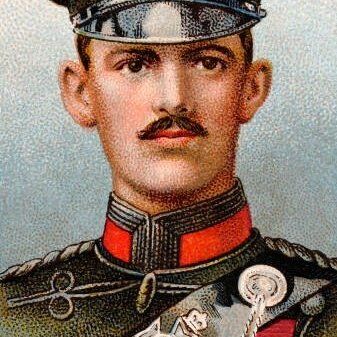
The Commemorative Paving Stone of John Dimmer, VC
Among the significant figures commemorated in Jubilee Gardens is Lieutenant-Colonel John Henry Stephen Dimmer VC (1883–1915), a British Army officer known for remarkable courage during the First World War.
If you haven’t heard of him before, John Dimmer was born in Surrey and raised in Wimbledon, London. After finishing school, Dimmer joined the army. Despite promotions early in his career and showing considerable aptitude, a lack of financial backing meant he could not afford to serve with the King’s Royal Rifle Corps (KRRC). However, world events would soon see him join the KRRC: World War I was announced while Dimmer was on leave, and he was sent to France in 1914.
A newspaper article from the Surrey Comet in 1918 gives us intimate details of Dimmer’s personal life. On Saturday the 19th of January 1918, Dimmer married Gladys Dora May Bayley-Parker in Moseley, Birmingham. The article tells us that the wedding had been postponed three times: he had been granted leave on three separate occasions but “been recalled twice to France and once to Salonica in Greece before the ceremony could take place”.
Tragically, two months later Dimmer’s name would appear in the newspapers again, this time announcing that he had been killed in action at Marteville, France on 21 March while commanding the 2nd/4th battalion of the Royal Berkshire Regiment.
Dimmer’s connection to Jubilee Gardens came nearly a century later. In 2014, as part of a nationwide initiative to commemorate local recipients of the Victoria Cross during the war’s centenary, a paving stone bearing Dimmer’s name was laid in the Gardens.
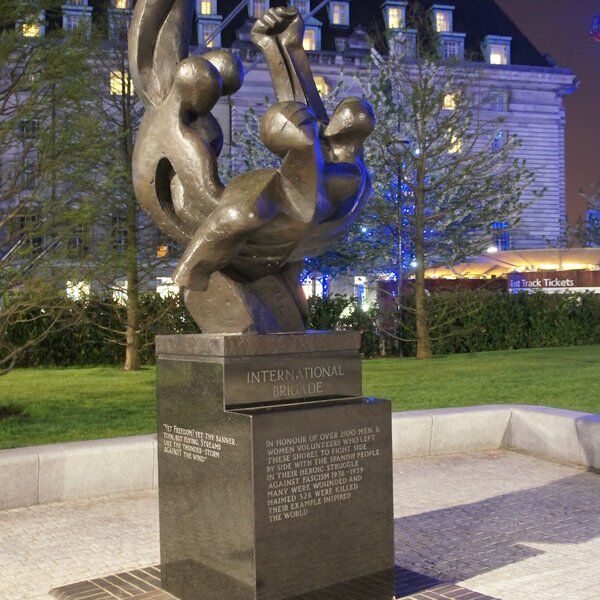
The International Brigades Memorial: Courage Across Borders
Among the most striking historical touchpoints in Jubilee Gardens is the memorial dedicated to the International Brigades, the volunteers from dozens of nations who travelled to Spain between 1936 and 1939 to defend the Spanish Republic during the Civil War.
These men and women included writers, dockworkers, miners, teachers, and activists who believed that fascism must be confronted, even at great personal risk.
Who Were the International Brigades?
Comprising around 35,000 volunteers from over 50 countries, the International Brigades became a symbol of anti-fascist solidarity. More than 2,500 volunteers came from Britain and Ireland alone, many joining the British Battalion. Their motivations were rooted in political conviction, outrage at rising fascism in Europe, and solidarity with Spanish workers and democratic institutions.
The Spanish Civil War was a brutal conflict. As Francisco Franco’s forces gained momentum with the support of Nazi Germany and Fascist Italy, the International Brigades found themselves facing overwhelming firepower. Thousands were killed, and many others returned home to societies that did not always celebrate, or even recognise, their sacrifice.
The Jubilee Gardens Statue
The International Brigades Memorial in Jubilee Gardens is one of the most prominent tributes to these volunteers in the UK. Installed in 1985 and later rededicated, the memorial features a powerful bronze figure by sculptor Ian Walters.
The statue symbolises determination, solidarity, and the willingness to resist oppression in a time of global turmoil. Importantly, it serves as a reminder that the fight against fascism was transnational, and that ordinary people took extraordinary risks in the name of justice.

Features & Facilities of Jubilee Park
These days, of course, Jubilee Park is one of many green spaces where Londoners and visitors alike flock to take advantage of open lawns and great views.
Here’s what you’ll find there:
- Terraced lawns ideal for picnics
- A large, modern playground popular with families
- Wide, well-surfaced paths accessible for wheelchairs and mobility devices
- Benches and shaded areas for rest and reflection
- Nearby cafés and food stalls lining the South Bank
Find More Things to Do in London with CityDays
Whatever your interests are, there’s always something new for you to discover in London.
In fact, you don’t have to go out of your way at all to find them - you just have to know where to look.
Discover London’s secret sights and noteworthy nooks by playing one of our London treasure and scavenger hunts, food experiences, escape room games or walking tours.
Looking to provide the best team building activities in London? Look no further.

You’ll find curated trails and hunts all over London, including Central London, Mayfair, Shoreditch, Kensington and Southwark.
All you have to do is team up with your partner, friends, family or whoever to solve riddles, complete challenges and answer trivia to lead you on an unforgettable journey around London’s most intriguing streets.
The best part? We’ll recommend top-rated pubs, cafés and restaurants and give your team the chance to earn rewards by competing on our leaderboard.





